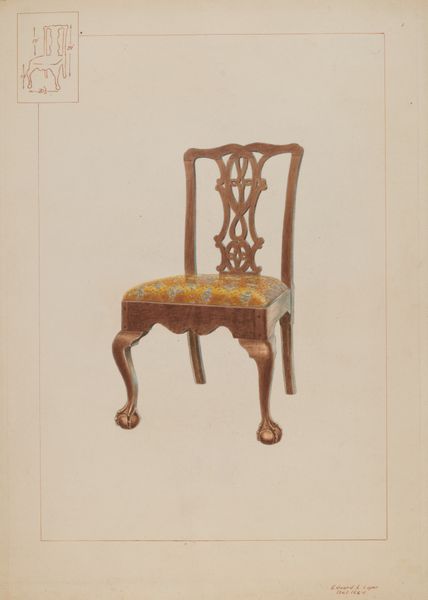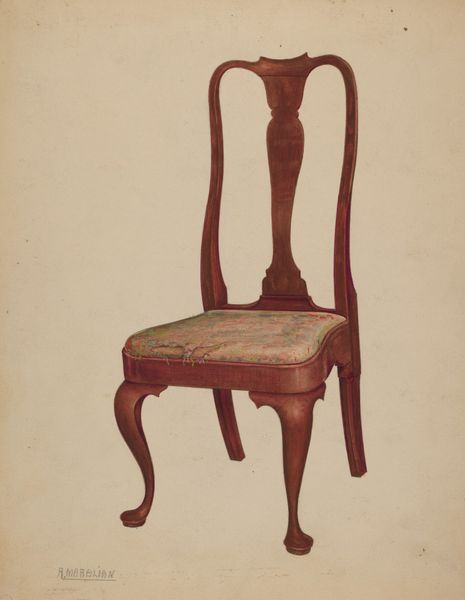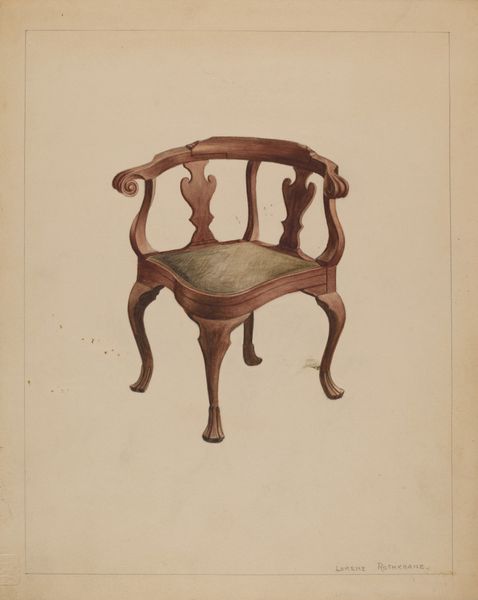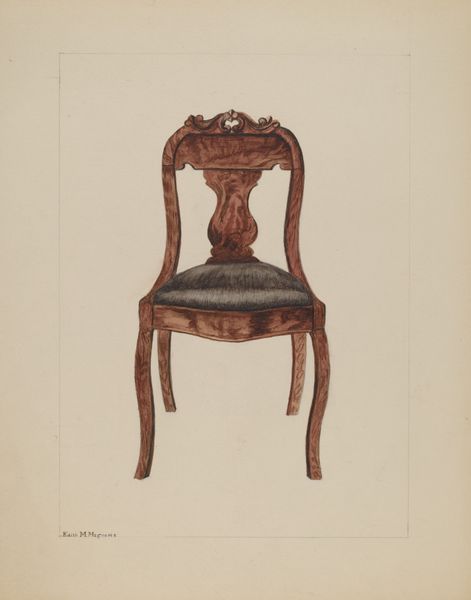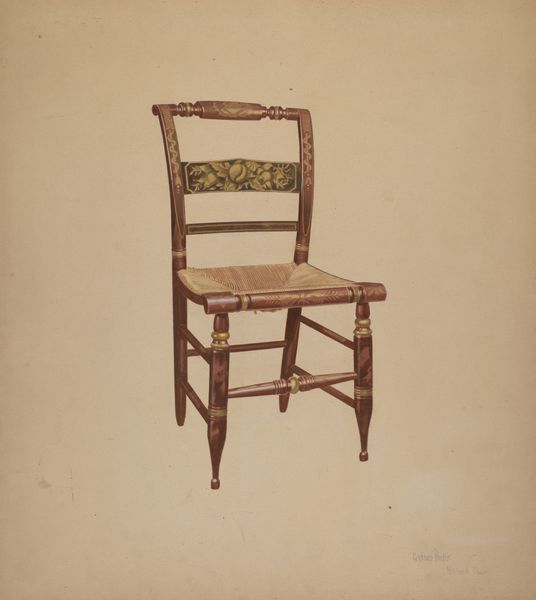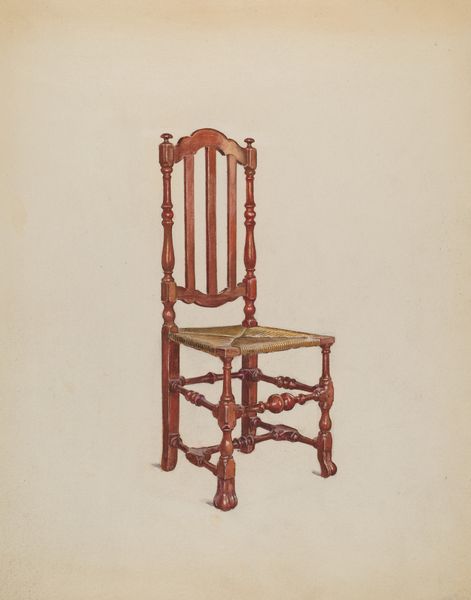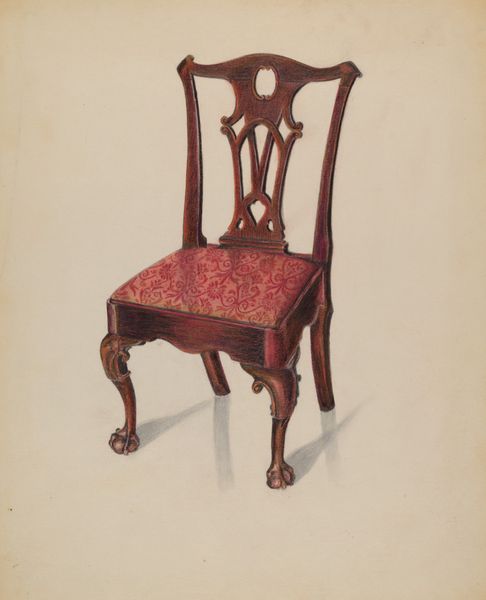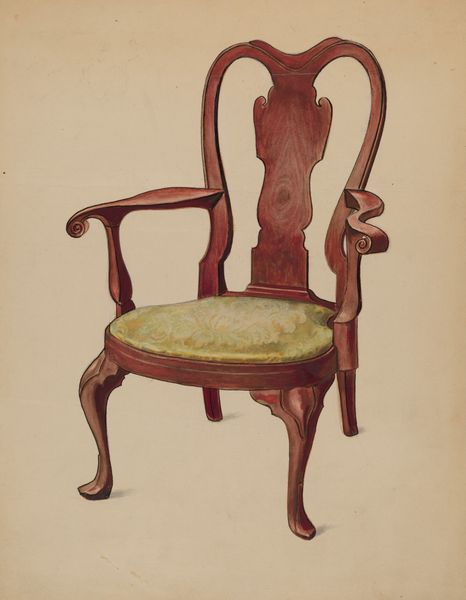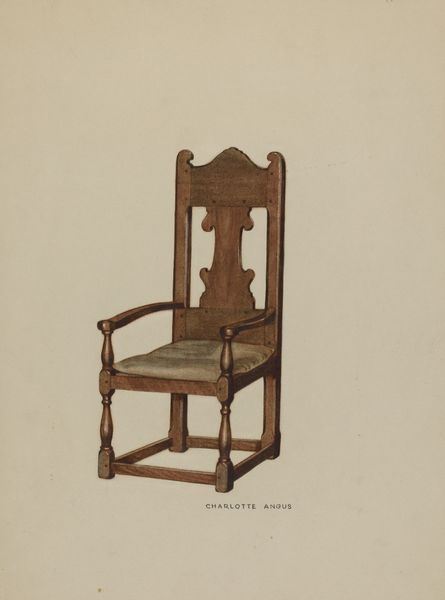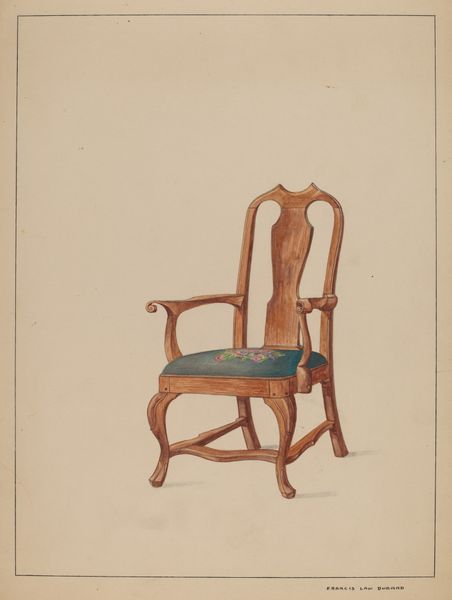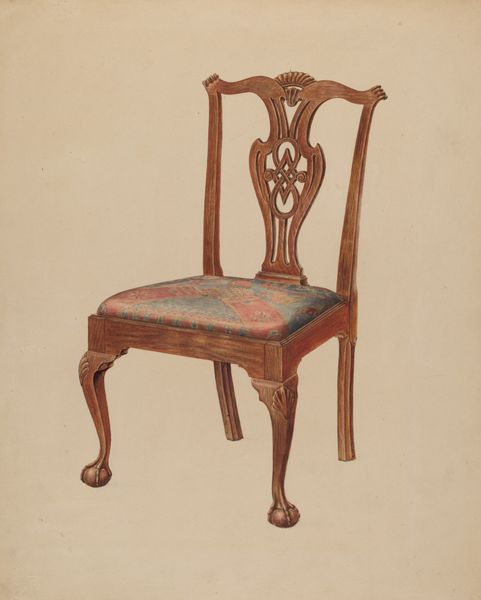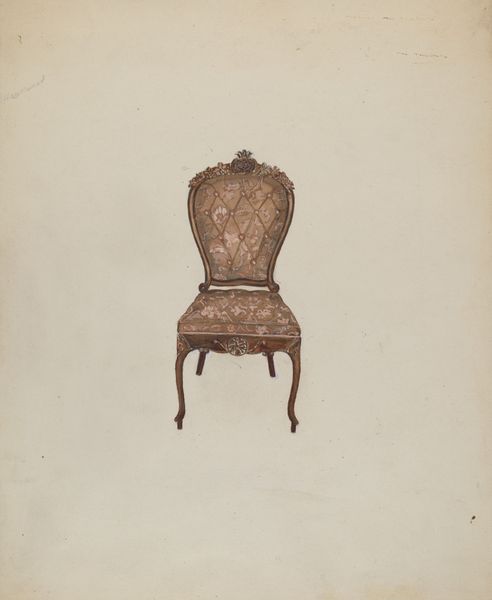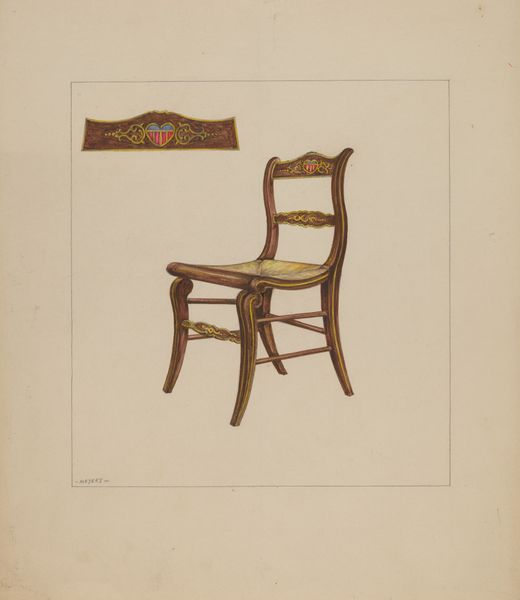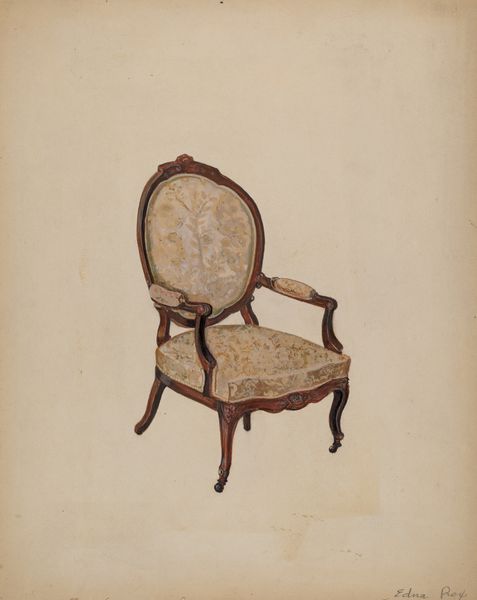
drawing
#
drawing
#
toned paper
#
light pencil work
#
pencil sketch
#
charcoal drawing
#
possibly oil pastel
#
pencil drawing
#
underpainting
#
watercolour bleed
#
watercolour illustration
#
watercolor
Dimensions: overall: 45.8 x 36.8 cm (18 1/16 x 14 1/2 in.) Original IAD Object: none given
Copyright: National Gallery of Art: CC0 1.0
Curator: Here we have Arsen Maralian's "Roundabout Chair," a drawing created in 1937. It's a beautiful rendition, primarily executed in pencil with watercolor bleed and possibly oil pastel highlights, all on a toned paper. What catches your eye about it? Editor: Instantly, it’s the sense of poised stillness. It's a portrait, almost—a regal posture conveyed through lines. It evokes this quiet, bygone era…like a dowager patiently awaiting tea. Curator: It’s fascinating how everyday objects get immortalized. Drawings like these, especially those created during the interwar years, reflect a societal focus on craftsmanship and the celebration of domestic life. Think of it within the context of design history; documenting, archiving the styles that were appreciated. Editor: You're right. The artist transforms what is utterly utilitarian into something beautiful, yes, even slightly whimsical! That chair-back crest! The velvety textures seemingly conjured by subtle strokes, that hint of sheen...it's pure sensory escapism. Curator: The medium also speaks volumes. The choice of watercolor and pencil provides a soft focus, perhaps reflecting the prevalent artistic styles that valued subtlety. The drawing becomes as much about atmosphere as the accurate depiction of form. Editor: And it invites speculation, doesn't it? Imagine this chair sitting by a sunlit window, waiting for its sitter, or maybe presiding over forgotten conversations…or simply the quiet observation of time slipping past. I imagine placing this image as stage setting for film production... Curator: Exactly. And, looking back, images like this demonstrate not just the object itself, but the artistic priorities and aesthetic considerations of the time in which it was made. Editor: In the end, though, it reminds us of the power of humble materials to stir extraordinary daydreams, to animate inert objects! To feel... Curator: Absolutely, and thanks to artists like Maralian, we can better understand what our predecessors saw value and beauty in.
Comments
No comments
Be the first to comment and join the conversation on the ultimate creative platform.
